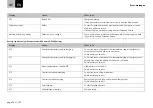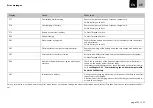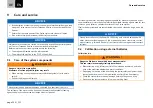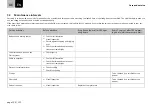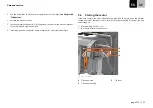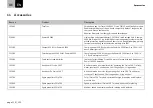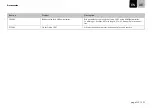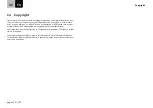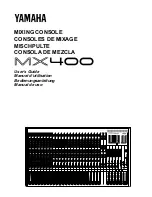
Disposal and environment
12 Disposal and environment
The Torqeedo motors are manufactured in compliance with EC Directive 2002/96.
This directive governs the disposal of electrical and electronic devices, with the aim
of sustainable protection of the environment.
You can hand over the motor to a collection point in accordance with regional regu-
lations. There, it will be disposed of properly.
12.1 Disposal of waste electrical and
electronic equipment
Fig. 62:
Crossed out waste bin
For customers in EU countries
The Cruise system is subject to European Directive 2012/19/EU relating to Waste
Electrical and Electronic Equipment – WEEE, and to the corresponding national
laws. Here, the WEEE Directive forms the basis for handling waste electrical equip-
ment across the whole of the EU. The Cruise system is marked with the symbol of a
see "Fig. 62: Crossed out waste bin"
. Waste electrical and
electronic equipment must not be disposed of as normal household waste, because
this could allow entry of pollutants to the environment which have effects injurious
to health on humans, animals, and plants, and which build up in the food chain and
in the environment. In addition, valuable raw materials are lost in this way. Please
therefore direct your waste equipment for separate collection in an environmental-
ly-friendly way; to do so, contact your Torqeedo Service team or boat builder.
For customers in other countries
The Cruise system is subject to European directive 2012/19/EU regarding waste elec-
trical and electronic equipment. We recommend that the system is not discarded
as normal household waste, but is disposed of via separate collection in an environ-
mentally friendly way. Your national laws may also prescribe this. Please therefore
ensure appropriate disposal of the system as per the regulations which apply in your
country.
12.2 Disposal of batteries
Remove spent batteries immediately, and comply with the following specific disposal
information relating to batteries or battery systems:
For customers in EU countries
Batteries are subject to European directive 2006/66/EC regarding (spent) batteries,
as well as to the corresponding national laws. Here the Battery Directive forms the
basis for handling batteries throughout the EU. Our batteries are marked with the
symbol of a crossed-out rubbish bin,
see "Fig. 62: Crossed out waste bin"
. The
designation of the pollutants contained, i.e. "Pb" for lead, "Cd" for Cadmium, and
"Hg" for mercury, is located beneath this symbol. Spent batteries must not be dis-
posed of as normal household waste, because this could allow entry to the environ-
ment of pollutants which have effects injurious to health on humans, animals, and
plants, and which build up in the food chain and in the environment. In addition,
valuable raw materials are lost in this way. Please therefore dispose of your spent
batteries exclusively via specially set-up collection points, your dealer, or the manu-
facturer. There is no charge for handing them in.
For customers in other countries
Batteries are subject to European directive 2006/66/EC regarding (spent) batteries.
The batteries are marked with the symbol of a crossed out rubbish bin,
. The designation of the pollutants contained, i.e. "Pb" for
lead, "Cd" for Cadmium, and "Hg" for mercury, is located beneath this symbol. We
recommend that the batteries are not discarded as normal household waste, but are
page 116 / 121

